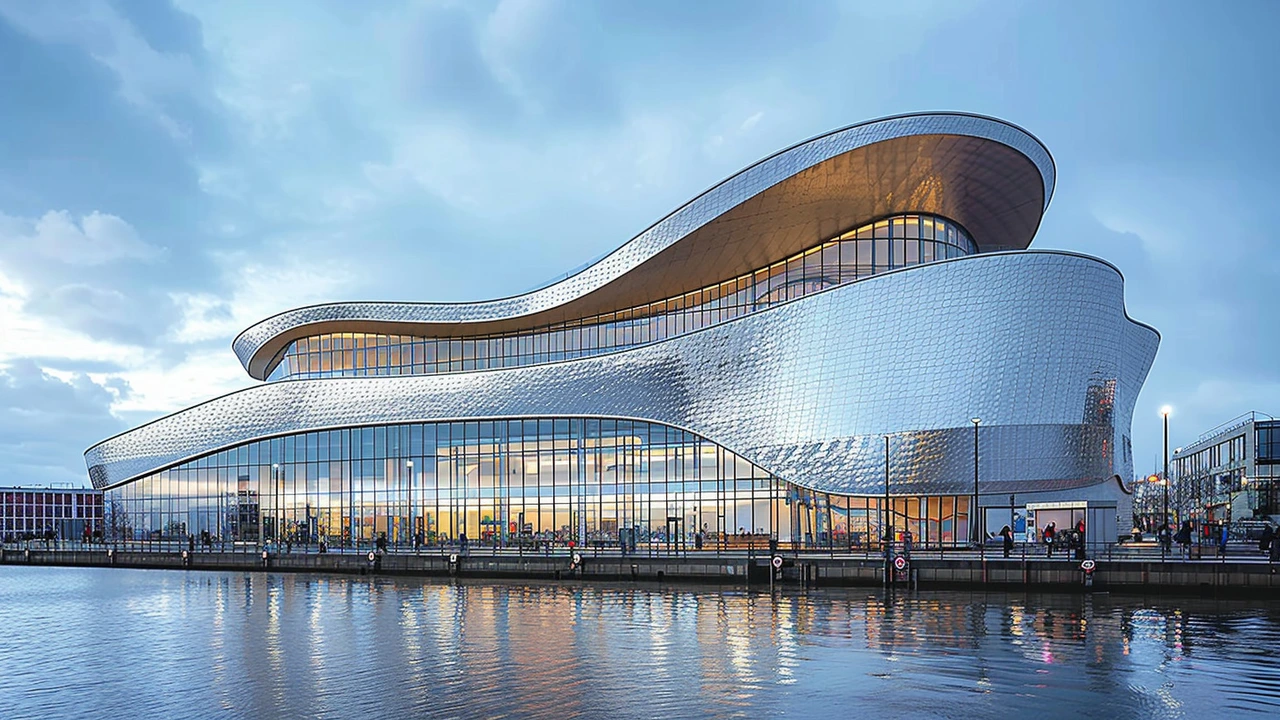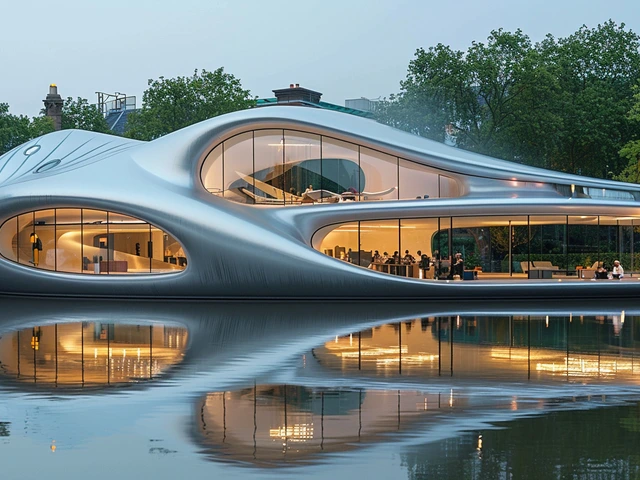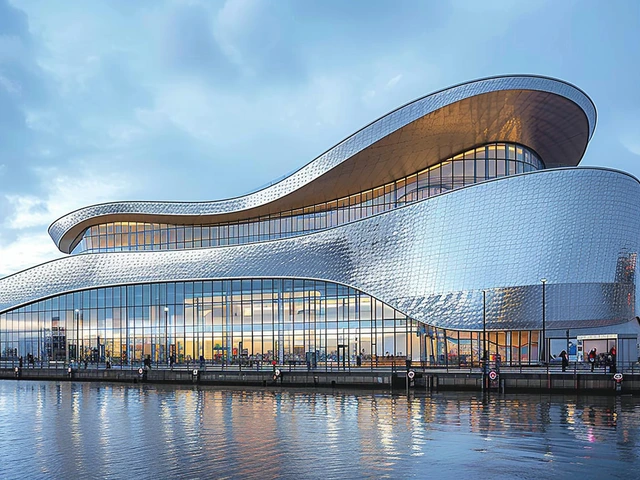Unraveling the Mystique of Expressionist Architecture
Imagine walking through a cityscape punctuated by buildings that seem to defy the very laws of physics and aesthetics. Structures that evoke emotions, symbolize ideas, and bear an undeniable uniqueness. This is the realm of Expressionist Architecture, a style that emerged in the early 20th century, primarily in Europe, as a bold departure from the prevailing architectural norms. It’s not just architecture; it’s an experience, marrying form and function with emotion and expression.
The movement found its roots in the broader Expressionist cultural movement, which sought to convey subjective emotions and experiences over realistic representations. Architects of this persuasion viewed buildings as canvases for their thickest emotions and philosophies. The resulting structures often feature distorted shapes, novel materials, and unprecedented forms. It was as though the buildings themselves were attempting to speak, telling tales of angst, desire, joy, and despair.
The Pioneers Behind the Movement
Intriguingly, Expressionist Architecture didn't materialize from a single source but was rather a confluence of minds and spirits yearning for a new way to communicate through built form. Key figures such as Bruno Taut, Fritz Höger, and Erich Mendelsohn didn't just design buildings; they crafted manifestos, wrote essays, and engaged in fervent discussions about the future of architecture. Mendelsohn’s Einstein Tower in Potsdam, Germany, stands as a testament to the innovative spirit of the movement, with its fluid, almost organic form that seems to surge upwards towards the sky.
'Architecture is the will of an epoch translated into space,' Ludwig Mies van der Rohe once famously said, encapsulating the essence of what these pioneers sought to achieve.
The Hallmarks of Expressionist Design
Characterized by an emphasis on dynamic forms, innovative use of materials, and the integration of new building technologies, Expressionist Architecture breaks free from traditional constraints to explore the artistic potential of structures. One of the movement's defining features is its use of bold, often distorted shapes intended to evoke emotional responses. Buildings might twist, stretch, and contort in ways that challenge conventional perceptions of space and stability.
Materials play a crucial role in this architectural vocabulary, with architects employing everything from glass to concrete to express their vision. The use of glass, in particular, allowed for buildings that not only reflected the light but seemed to be made of it. The Goetheanum in Switzerland, designed by Rudolf Steiner, is a prime example of this, with its double-dome structure crafted from wood and concrete, and large windows that invite the outside in.
Iconic Structures of Expressionist Architecture
There are buildings that, once seen, are never forgotten, and the realm of Expressionist Architecture is replete with such examples. The aforementioned Einstein Tower is one; the Chrysler Building in New York City, with its gleaming art deco facade and towering spire, is another. Though not purely expressionist, the Chrysler Building incorporates elements of the style in its emotive impact and innovative use of materials.
In Berlin, the Grosses Schauspielhaus, designed by Hans Poelzig, showcased another facet of the expressionist vision, with its cavernous, star-studded ceiling that transformed the interior into a mystical, otherworldly space. These structures, and others like them, serve as bold statements of an architectural philosophy that dares to dream.
Expressionism in Today's Architectural Landscape
While the height of Expressionist Architecture may have been in the early 20th century, its influence persists in contemporary design. Architects today still draw upon the movement’s core principles, integrating technology with organic forms and emotional depth. Structures like the Guggenheim Museum Bilbao, designed by Frank Gehry, echo the expressionist tradition with their fluid forms and striking visual impact. Gehry’s use of computer-aided design technologies to realize complex shapes heralds a new era of expressionist-inspired architecture capable of pushing the boundaries of imagination even further.
In the bustling streets of cities around the globe, the legacy of Expressionist Architecture lives on, reminding us of the power of built environments to move, inspire, and provoke thought.
Navigating the Future with Expressionist Principles
The questions then arise: How can Expressionist principles be applied to address the challenges of contemporary architecture? Sustainability, urban density, and technological integration are but a few of the issues facing today’s architects. Expressionist Architecture, with its emphasis on innovation and emotion, offers a framework for creating buildings that are not only functional and sustainable but also deeply resonant with human experience.
By marrying modern technology with expressionist sensibilities, architects can create spaces that truly reflect the complexities and nuances of contemporary life. The future of Expressionist Architecture, then, lies in its potential to inspire new generations of architects to envision buildings that are not only structures but expressions of humanity’s highest aspirations and deepest feels.
Conclusion: The Enduring Legacy of Expressionist Architecture
Expressionist Architecture stands as a bold commentary on the power of human creativity and emotion. Its legacy is not just in the buildings that bear its hallmark but in the enduring fascination and inspiration it provides to those who seek to understand and evolve the architectural landscape. As we move forward, the principles of Expressionism continue to offer a rich vein of inspiration, challenging us to envision a built environment that speaks to the soul as much as it does to the eye.
In the journey through the corridors of Expressionist Architecture, we find more than just buildings; we discover a dialogue between form and feeling, a dance of light and shadow, and an invitation to see the world anew. It’s a testament to the enduring power of architecture to move us, and a reminder that our built environment can, and should, be a reflection of our highest aspirations.





Leave a Comments